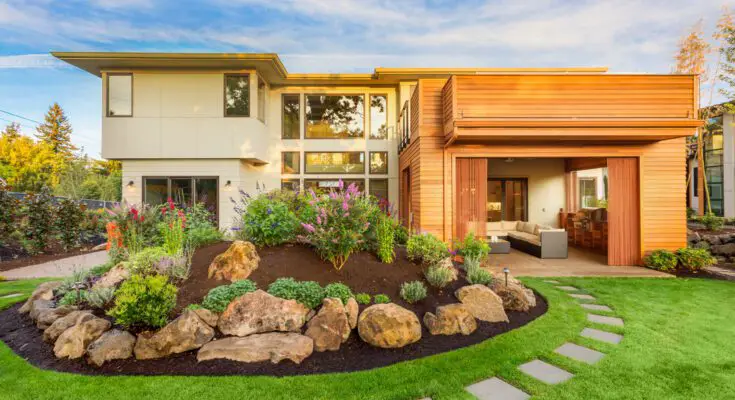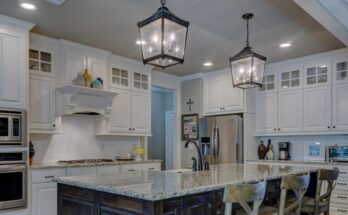Introduction to Landscaping
Landscaping is the art of transforming outdoor spaces into beautiful, functional, and harmonious environments. It involves a blend of creativity, horticultural knowledge, and design principles to create stunning outdoor areas that enhance the beauty of homes and businesses. Whether you’re looking to revamp your backyard, create a serene garden, or boost your property’s curb appeal, understanding the basics of landscaping can help you achieve your goals.
The Elements of Landscape Design
Hardscaping
Hardscaping refers to the non-living elements in a landscape design. These include:
- Patios and decks
- Walkways and paths
- Retaining walls
- Water features
- Outdoor kitchens and fire pits
Hardscaping provides structure and functionality to your outdoor space, creating areas for relaxation, entertainment, and movement throughout the landscape.
Softscaping
Softscaping encompasses the living elements of your landscape design:
- Trees and shrubs
- Flowers and plants
- Lawns and groundcover
These elements bring color, texture, and life to your outdoor space, creating a dynamic and ever-changing environment throughout the seasons.
Planning Your Landscape
Before diving into a landscaping project, it’s essential to plan carefully. Consider the following factors:
- Climate and soil conditions
- Sun exposure and shade patterns
- Existing structures and vegetation
- Drainage and water management
- Budget and maintenance requirements
By considering these factors, you can create a landscape that not only looks beautiful but also thrives in your specific environment.
Choosing the Right Plants
Selecting the appropriate plants for your landscape is crucial for its long-term success. Consider the following when choosing plants:
- Native species: Plants native to your area are often better adapted to local conditions and require less maintenance.
- Water requirements: Group plants with similar watering needs together to create efficient irrigation zones.
- Growth habits: Consider the mature size of plants to ensure they fit well in your design over time.
- Seasonal interest: Choose various plants that provide visual interest throughout the year.
Creating Focal Points
Focal points draw the eye and create visual interest in your landscape. Some ideas for focal points include:
- Specimen trees or shrubs
- Sculptures or garden art
- Water features
- Unique hardscaping elements
- Colorful flower beds
Strategically placing focal points throughout your landscape can guide the viewer’s eye and create a sense of depth and dimension.
Sustainable Landscaping Practices
Incorporating sustainable practices into your landscape design can benefit both the environment and your wallet. Consider these eco-friendly approaches:
- Use drought-tolerant plants to reduce water consumption
- Implement rainwater harvesting systems
- Create habitat for local wildlife
- Use organic fertilizers and pest control methods
- Incorporate permeable paving to reduce runoff
The Importance of Proper Maintenance
A beautiful landscape requires ongoing care and maintenance to keep it looking its best. Regular tasks include:
- Mowing and edging lawns
- Pruning trees and shrubs
- Weeding and mulching
- Fertilizing and pest control
- Irrigation system maintenance
Establishing a consistent maintenance routine will help preserve the health and beauty of your landscape over time.
Landscaping for Different Climates
Adapting your landscape design to your specific climate is essential for creating a thriving outdoor space. Here are some considerations for different climate types:
Arid Climates
- Focus on drought-tolerant plants
- Use xeriscaping techniques
- Incorporate shade structures to protect plants from intense sun
Tropical Climates
- Choose plants that can withstand high humidity and rainfall
- Create proper drainage to prevent waterlogging
- Use mulch to retain moisture and suppress weeds
Cold Climates
- Select cold-hardy plants that can withstand freezing temperatures
- Incorporate windbreaks to protect plants from harsh winter winds
- Use evergreens for year-round interest
Landscaping for Small Spaces
Even small outdoor areas can be transformed into beautiful landscapes with the right approach:
- Use vertical gardening techniques to maximize space
- Choose dwarf or compact plant varieties
- Incorporate multi-functional elements, such as built-in seating with storage
- Create the illusion of space with mirrors or reflective surfaces
- Use container gardens for flexibility and mobility
The Role of Color in Landscape Design
Color plays a crucial role in creating mood and atmosphere in your landscape. Consider these color principles:
- Warm colors (red, orange, yellow) create energy and excitement
- Cool colors (blue, purple, green) promote relaxation and tranquility
- Complementary colors create visual contrast and interest
- Monochromatic color schemes create a sense of harmony and unity
Incorporating Edible Landscaping
Integrating edible plants into your landscape design can be both beautiful and functional. Some ideas include:
- Fruit trees as focal points
- Herb gardens near outdoor cooking areas
- Vegetable beds with attractive companion plants
- Berry bushes as hedges or borders
Lighting Your Landscape
Proper lighting can extend the usability of your outdoor space and create stunning nighttime effects. Consider these lighting techniques:
- Path lighting for safety and navigation
- Uplighting to highlight trees and architectural features
- Moonlighting to create a soft, natural glow
- Task lighting for outdoor kitchens and work areas
Working with Professionals
While many landscaping projects can be DIY endeavors, some may require the expertise of professionals. Landscape architects and designers can help with:
- Comprehensive site analysis and planning
- Custom design solutions
- Plant selection and sourcing
- Project management and coordination
For those in Utah seeking professional landscaping services, Utah county landscaping offers a range of options to help bring your outdoor vision to life.
Embracing the Beauty of Natural Landscapes
Creating a beautiful landscape doesn’t always mean completely transforming your outdoor space. Sometimes, working with the natural features of your property can yield stunning results:
- Preserve existing mature trees and integrate them into your design
- Incorporate natural rock formations or slopes into your landscape
- Create wildlife-friendly areas to attract local fauna
- Use native plants to create a landscape that blends seamlessly with the surrounding environment
Wrapping Up
Landscaping is a rewarding endeavor that allows you to create beautiful, functional outdoor spaces that enhance your quality of life and property value. By understanding the principles of landscape design, choosing the right plants, and incorporating sustainable practices, you can transform your outdoor areas into stunning natural retreats that provide enjoyment for years to come. Whether you’re tackling a small DIY project or working with professionals on a large-scale renovation, the key to success lies in thoughtful planning, creativity, and a deep appreciation for the natural world around us.


